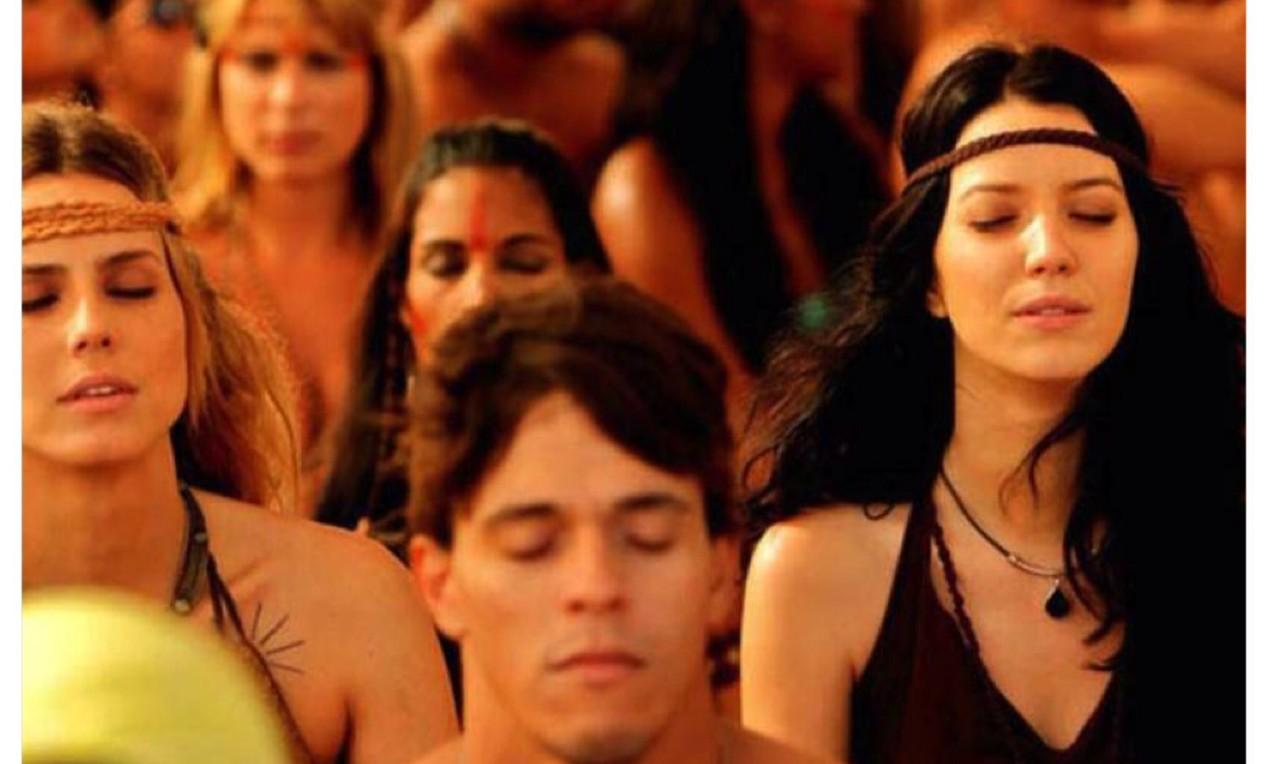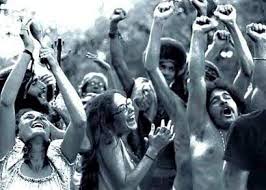Becoming Buddhist
As Millenial's grow more conscious of our environment and health, one must wonder, who is taking care of your spirit?
December 23, 2013
In between First Avenue and Sutton Plaza, looking slightly out of place amongst 57th Streets upscale apartment buildings, sits the Won Buddhist Temple of Manhattan.
Unlike the rest of the neighborhood, its heavy wooden door holds a primitive refinement. It’s as if it were the first one on the block and had, in some way, established a traditional dominance – assuring it would outlive midtown renovations.
It was Wednesday, which meant the Won Temple was hosting an evening meditation class. The hour allows practitioners to focus on breathing, posture and clarity followed by 30 minutes of silence; an objective that hardly seems possible in the middle of Manhattan. In the Big City, there is rarely a place to escape the noise, and even far less of a chance at escaping your thoughts.
But on the other side of the Temple doors, lies silence.
The tranquility stretches on for what seems like hours until, I was alone. I wait and wonder if I had ever heard such silence, or rather, not heard it. Is it actually a noise or a debatable question, like whether white is actually a color?
The sign on the wall requesting that I surrender all electronics with my shoes seemed welcoming, I felt awkwardly out of place; as if I had stepped into a stranger’s house, only no one lived there.
Before now, I had known little of Buddhist belief or their religious traditions, but the choice to call out in search of some response seemed disrespectful.
So I wandered.
New York City, now as it has always been, is a place of individual expression, a mosh-pit of opportunity that has a knack for turning small town misfits into countercultural geniuses. But today’s generation of guitar strumming Millennials have no use for book smarts, but rather an innate desire for self enlightenment.
Clad in thrift shop finds, twenty somethings now, more than ever, have found solace in the simplicity of holistic practices rather than through other religious reverence. And one can only wonder if this open acceptance, this shared curiosity for spiritual exploration, is merely a bit of history repeated.
Buddha’s teachings are some of the oldest in the world but have since moved west to cultivate peaceful minds here in America. While clarity has always played a part in transcendence it also raises a few questions of modern adaptations. Is the practice meant for the body of the mind, inquiry or cessation of ones thoughts? Perhaps making it all the more difficult to decipher for any young adult, an examination of ethics. Even more curious, an examination of our matured selves and discipline we’ve acquired outside the real of adolescent Bible study. We are no longer expected to attend Sunday Mass because it’s what we have always done, what our parents have always done, because their parents always did it. Millennial’s are innovators, even with a growing stigma against our lifestyles, we are known for that. By reaching a defiant peak of independence, Millennials now have a choice and it seems that what’s really pulling us towards spiritual mindfulness aren’t subdued spurts of religious rebellion, but an openness to our social surroundings and a willingness to change.
Though later awakenings may lack ancient ritual and holy symbolism, spiritual awareness lit a modern spark during the 1950s with the Human Potential Movement. While traditional Buddhist teachings continued, the search for self-fulfillment was approached from a psychological standpoint.
Psychology’s founding fathers, Carl Rogers and Abraham Maslow, modernized interest in human potential by presenting an alternative to established well established methods by conceptualizing self-actualization. Maslow’s study focused on extraordinarily successful figures rather than exceptionally troubled people. At this time, his structured idea of expression made sense, it asked all the right questions of the people who seemed to have all the right answers. What was their mindset, was it spiritual, and what components collectively made any one person successful?
The 50’s brought theories based on cause and effect; concrete reasons behind the aspiration of becoming something more and reaching ones highest potential. But that was before the era of Bohemia, before the hedonism of Woodstock, and before anyone waited for a reason to do whatever they wanted, regardless of the effect.
After tiptoeing around the bottom floor and deeper into the quietness, the narrow staircase seemed the next best route at greeting any other source of life. I begged the stairs to announce my presence but, they, like the rest of the Temple, remained soundless. There were no creeks, no hum from the street and still no sign of tenants. It was if all sound had evaporated. Was this the first step to finding myself? I felt like I had already reached some level of spiritual clairvoyance, when Doyeon, the Temple’s ordained minister, crept down the stairs.
Once others had filed into the upstairs Temple the group found their spot in the circle of silk pillows. Doyeon led the evenings practice with a series of stretches explaining that “before we can loosen our minds, we must loosen our bodies.”
This made sense. I had been to yoga before and on some level, this clicked. In the studio, yogis were encouraged to focus on their breathing and the even flow of energy through the body as they bent to touch their toes, just as Doyeon was instructing now.
However, rather than downward dogs and headstands, the meditation period was evoked by a chant welcoming the Amit Buddha (In Sanskrit, Amit translates to “boundless light and boundless life”).
“Na-Mu Ah-Mi-Ta Bul…Na-Mu Ah-Mi-Ta Bul… Na-Mu Ah-Mi-Ta Bul…”
The chant concluded as Deyone curled up on her own pillow at the front of the room. I quickly scanned the room, curious of who else may be struggling with the circumference of their silk pillow. Flashing a coy smile, Doyeon placed each hand on her perfectly pretzeled knees and announced that the individual meditation period had begun. The question of whether I was ready for this remained unanswered. I assumed there was some type of training involved before perfecting the art of meditation. Nevertheless, I imitated her statuesque posture as best I could and closed my eyes.
In the midst of my meditation, or lack of, it became apparent that Buddhist practice is as much about the body as it is the mind. Just as technology has improved, so has society’s awareness of cultural creativity, environment, natural diets, and our budding spirituality. It seems that this new level of spiritual achievement has come to affect every aspect of life.
According to the Pew Research Center, U.S. organic sales grew by 17 percent racking in $21.1 billion from organic food and non food products in 2008. But these revelation have crossed over to include a new demographic of practitioners nicknamed Bobos: Bourgeois Bohemians.
American Journalist David Brooks, author of The new Upper Class and How they got there, described this matured set of Millennials as “domesticated hippies that now serve as management tools for the Fortune 500.” Brooks elaborates in expressing that “it’s no longer about the money, it’s about doing something you love.” For years, these Bobos, well educated 30-40 year olds who have quieted their inner voice for jobs as bankers, are now forging a new path of social philosophy from the ’60s counterculture and have reclaimed individual passions with an entrepreneurial spirit.
One can only hope that the acceptance of Buddhist practice is purely to revamp society’s infatuation with material objects rather than a shared peak of midlife crisis.
It had been all of five minutes before I figured out that delving into the minds darkness while at the same time groping for any sign of enlightenment was harder than Doyeon had led on. My delicate gold pillow began to feel more like a lumpy rock. Both feet had grown numb and every muscle in my back was now screaming over the silence and begged for a slouching release. Just as in yoga, meditation is focused on perfect posture and an even breath.
At the risk of breaking what little concentration I had achieved, I allowed one squinted eye to open to observe the rest of the circle in their individual states of stillness. It seemed as if I was the only one meditating through the harsh reality that I needed to hit the gym. Allowing my other eye to flutter open I was overcome by a new emotion, envy; a direct offense of one of Buddhist ethics, “Let us change resentment in to gratitude.”
Unlike other religions that may instill value through verse and chronicle, Buddhists train the mind to prevent immorality. Instead of pointing out right from wrong they focus of trading one feeling of negativity or transgression for one of positivity.
It was clear if not by their stillness, but by the surge of my own worldly emotions I was the least experienced in the circle. The rest had been here before and I was positive they had already gathered I was a first timer by my chanting that more closely resembled Spanglish. I couldn’t help but notice a tall slender man to my left in a thick black turtleneck. He sat motionlessly perched on his golden pillow of nirvana, his long ponytail hovering against his straight back.
Surely he would begin to levitate soon.
Millennials exploration for spiritual illumination may come kneeling in vintage T-shirts in hopes of achieving their full potential without worldly delusions, something all Buddhist practices encourage. The Won Temple had cultivated their practice on the belief that interconnected humanity can change the world we live in one breath at a time. I assume that is how everyone in the circle started, as did Deyone, and with that I chose to fall back into darkness on my pillow.
We still had 20 more minutes to go.

